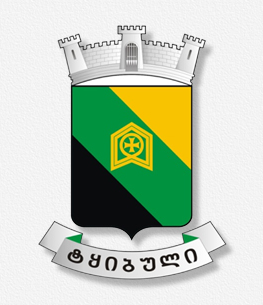HISTORY
Imereti is one of the historical-geographic regions of Western Georgia. It is bordered on the east by the Likhi Range, on the west by the Tskhenistskali River, on the north by the Caucasus Range, and on the south by the Meskheti Range.
Imereti is divided into two geographical regions – Upper Imereti a Lower Imereti and there are 11 administrative municipalities: Bagdadi, Vani, Zestaponi, Terjola, Samtredia, Sachkhere, Tkibuli, Kharagauli, Khoni, Tskaltubo and Chiatura.
The first inhabitants appeared here in the Paleolithic era. Remains of ancient settlements were found in Kutaisi, Vani, Shoropani, Varcixe and in other places. In the ancient ages, this territory was crossed by a very important international trade route called the Silk Road that was connecting the Western world with the Eastern countries.
In the 3rd–7th centuries, the land became a reason of conflict between Greeks and Persians. In 735 the Arab commander destroyed the Fortress of Kuji located in the capital of Egrisi. Two princes David and Constantine Mkheidze of Argveti, died in the war against Arabs. The church recognized the brothers as saints and in their honor built a Motsameta Monastery (a name derived from the Georgian word for martyrdom) in the ravine of the Tskalwitela River.
At the end of the 8th century, a noble of Abkhazia rebelled against Byzantium and declared himself as a king. He unified the Western Georgia and declared Kutaisi as a capital where in 978 the first king of united Georgia, Bagrat III was crowned. In 1003, he built a church in the city which was named after him and which became a symbol of unified Georgia.
The Kingdom of Imereti was formed in the 15th century after the collapse of the monarchy. The Kingdom united the whole Western Georgia however in the 16th century Abkhazia, Samegrelo, Svaneti and Guria Kingdoms separated from it. The Kingdom of Imereti was ruled by a king from the Western branch of Bagrationis’ dynasty. The King of Imereti was oppressed by the heads of Guria and Odishi. Some Imeretian nobles were not obeying him either.
From the 60s to 70s of the 17th century Turkish troops stationed in Kutaisi, Shorapani, Cuckhvati and Bagdadi. The King of Imereti Solomon I expelled the enemy with the support of Russian General Totleben. Solomon I also fought against the recalcitrant feudal inside the country. He abolished the Racha stands, blinded Racha’s noble Roston Ckheidze and his seven sons. The King suppressed slave trading and in 1757 he defeated Turks in the battle near the village of Khresili. After the death of Solomon I in 1784, the central government became weaker however Solomon II managed to strengthen the Kingdom.
In 1804, The Kingdom of Imereti became part of the Russian Kingdom and it was abolished in 1810. Solomon II escaped to Turkey to Trapzon where he died in 1815. His body was brought to Georgia in 1990 and he was buried in Gelati. Imeretian inhabitants didn’t want to adopt the new regime and they rebelled several times in 1819–1820.
In the first half of the 19th century winter school and Classical Gymnasium was opened in Kutaisi. Famous Georgian writers like Akaki Tsereteli, Niko Nikoladze, or Galaktion Tabidze studied there. In 1840, region of Imereti was divided into four districts: Vani, Shorapani, Kutaisi and Racha. The Russian King abolished Samegrelo principality in 1857, Svaneti’s principality in 1858, and Abkhazeti’s principality in 1864. In 1865 the government abolished serfdom. This reform played a huge role in development of the Bourgeois relations. Many workers supported the industry progress.
Economic life of Georgia improved after the railway construction. The first railway connecting Chiatura with Poti was built in 1871. Then in 1872 Poti-Tbilisi railway was constructed and in 1877 Kutaisi joined Trans Caucasus railway.
The 60s–70s of the 19th century is a very important period in the history of Georgia. Since then the social-political movement was led by the new generation called Tergdaleulebi represented by Ilia Chavchavadze, Akaki Tsereteli, Niko Nikoladze and others.
A great Georgian writer Akaki Tsereteli spent most of his life in Kutaisi. He called the city Samaiso (a name derived from a Georgian word May). Other famous people who lived in the city include a theatre actor and director Lado Meskhishvili, a poet Titsian Tabidze and a classical music composer Zakaria Paliashvili.
The region of Imereti is rich with its historical monuments like Bagrati Cathedral, the Assembly of Gelati Monastery, Motsameta Monastery, ancient castle Shorapani, or ancient cities Vani and Kutaisi.
Agriculture especially fruit and vegetable farming are one of the largest industries in Imereti region. There are 4 Hydroelectric Power Plants in the region: Rionhess, Gumathess, Varcikhehess, Dzevrulhess.
The region is outstanding with mineral ore. The main mineral wealth is Chiaturian manganese, Tkibuli da Gelati coal, clay supply, marble and limestone.
Imereti is known for its healing springs in Sairme (Bagdati municipality) and Nunisi (Kharagauli municipality) and 53 health and leisure resorts. The most outstanding ones are Tskaltubo, Sairme and Sulori.
On the territory of Sataplia Nature Reserve, there are footprints of dinosaurs and crystal caves.
Video
News calendar
 |
April 2025 |  |
||||
|---|---|---|---|---|---|---|
| Mon | Tue | Wed | Thu | Fri | Sat | Sun |
| 1 | 2 | 3 | 4 | 5 | 6 | |
| 7 | 8 | 9 | 10 | 11 | 12 | 13 |
| 14 | 15 | 16 | 17 | 18 | 19 | 20 |
| 21 | 22 | 23 | 24 | 25 | 26 | 27 |
| 28 | 29 | 30 | ||||
Calendar
























